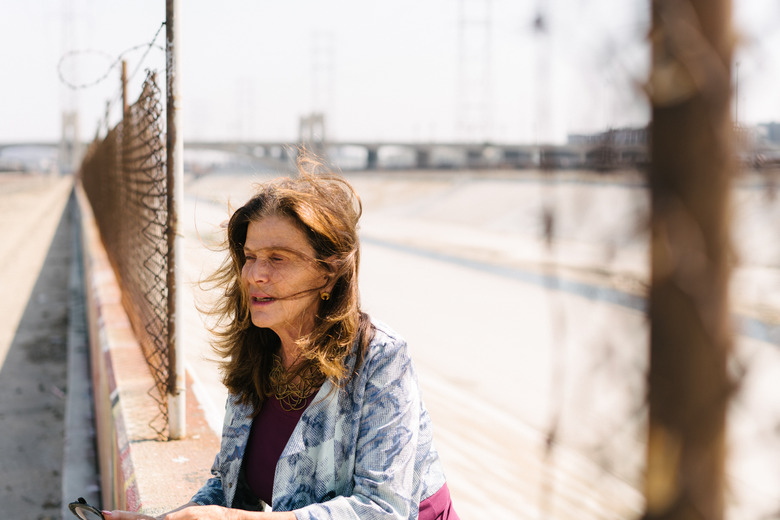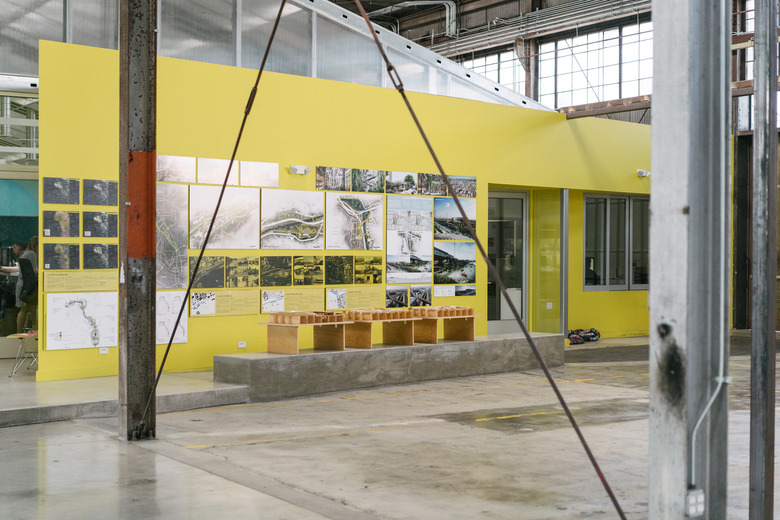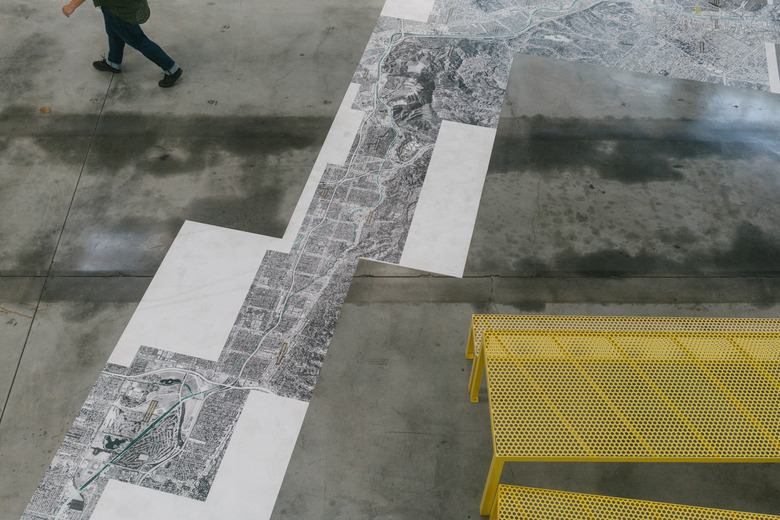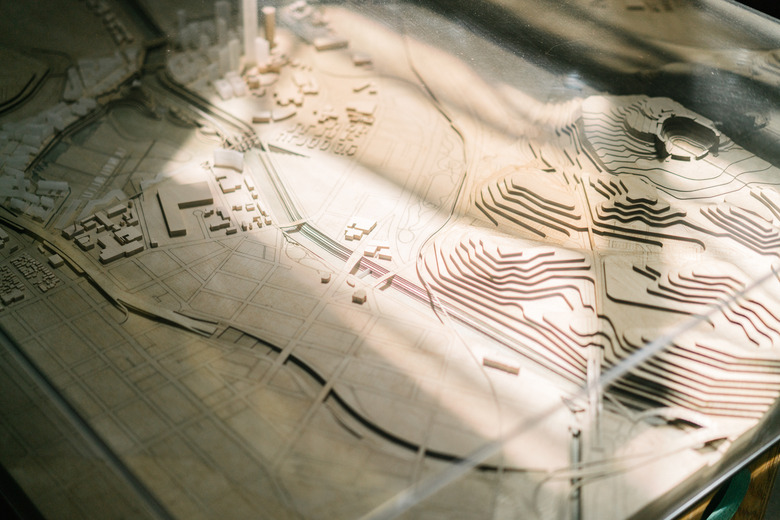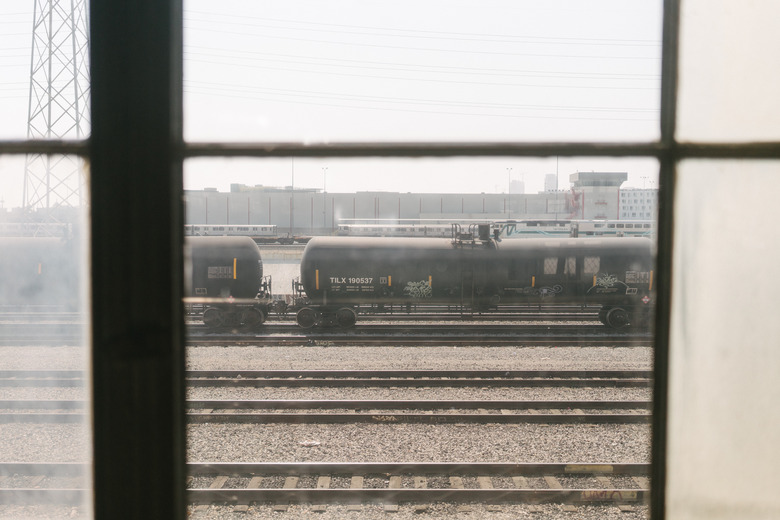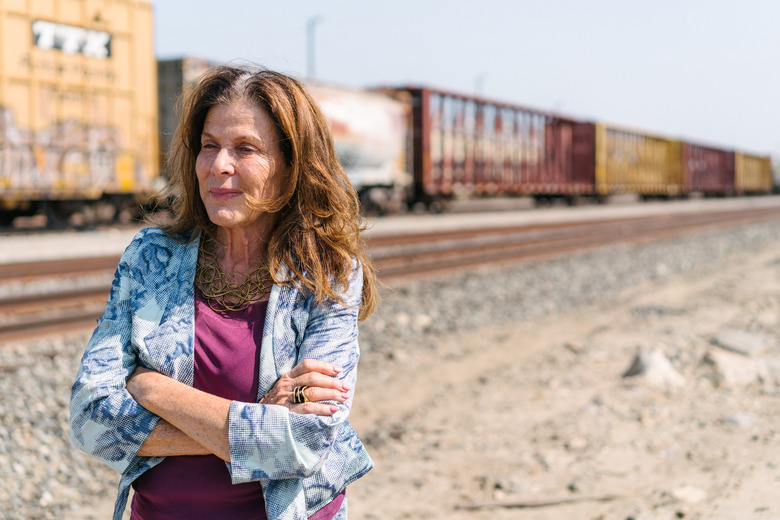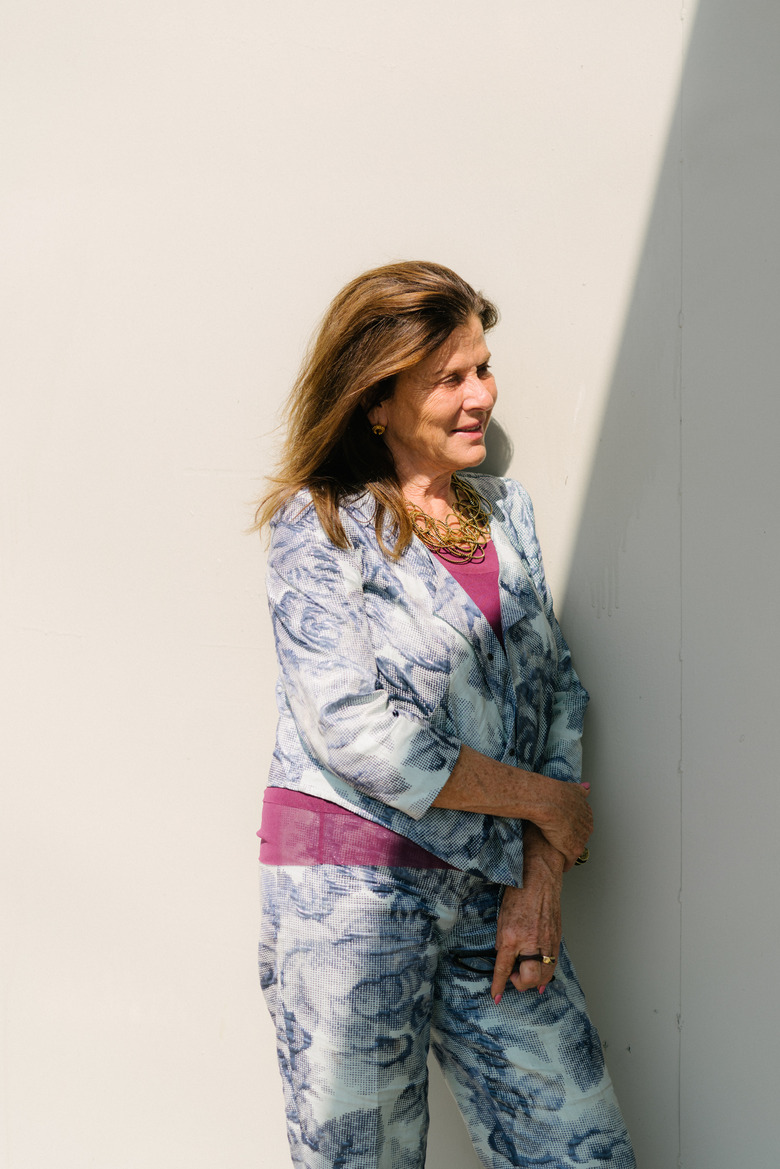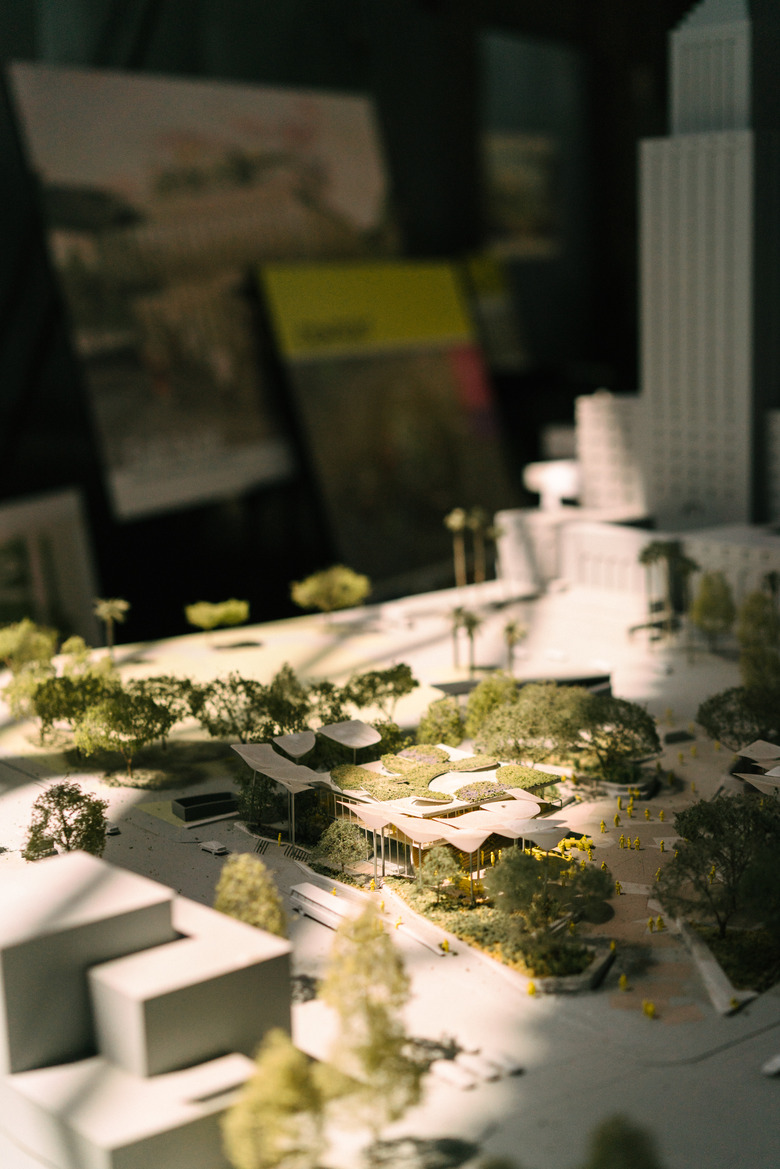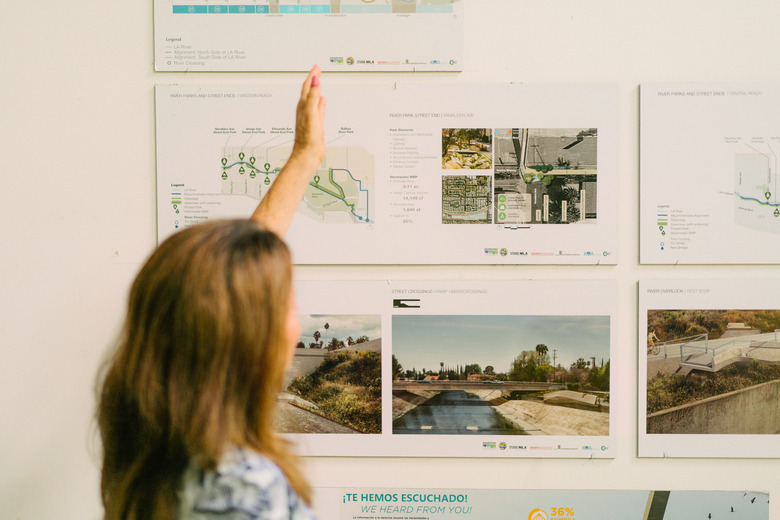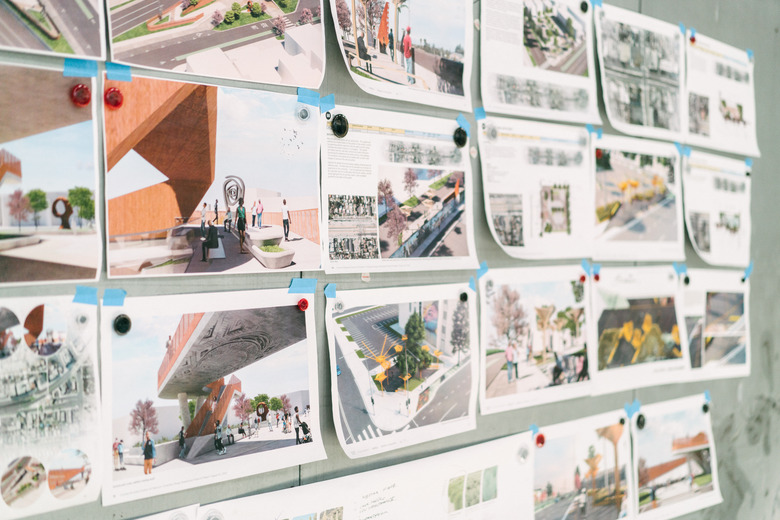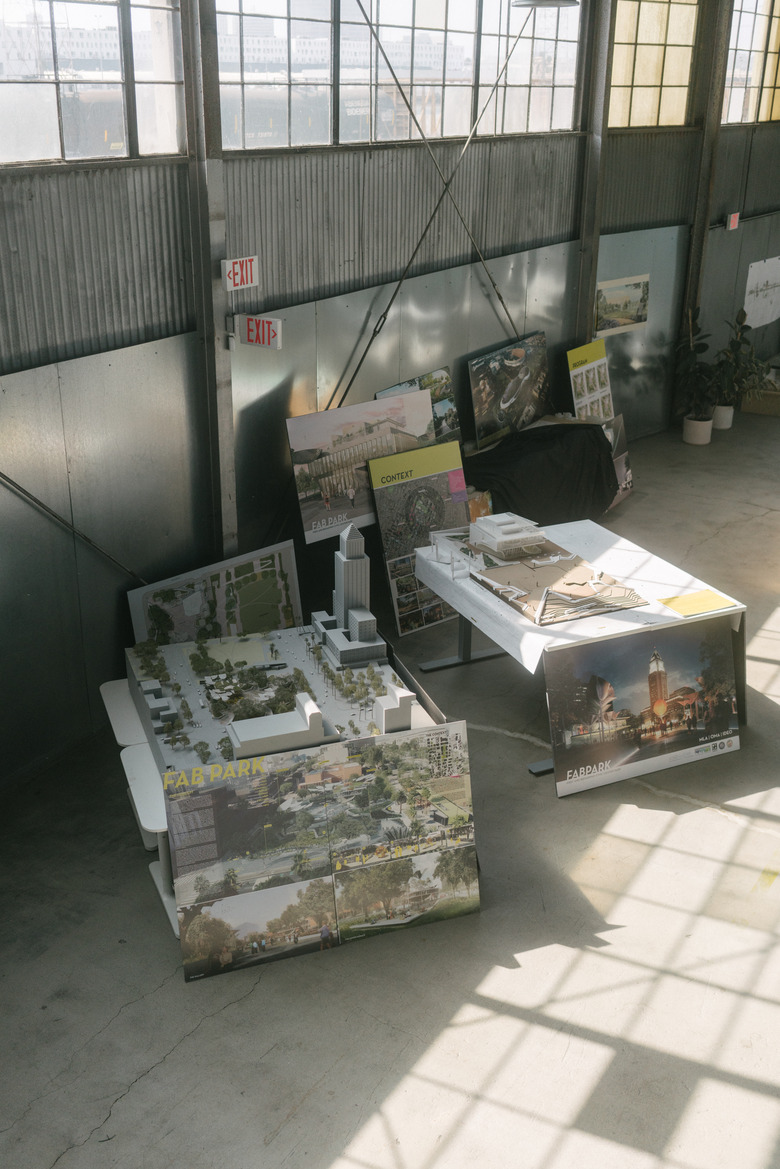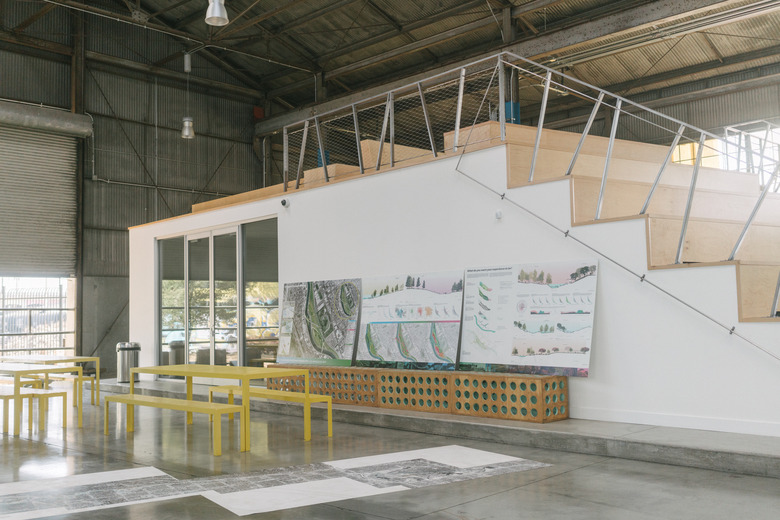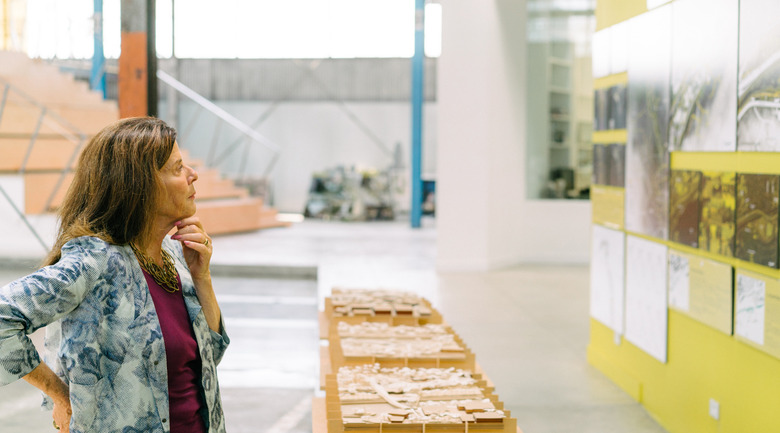Architect Of Impact: Mia Lehrer
Mia Lehrer is breaking the law, and she's taking me with her. As I follow the ubiquitous Los Angeles landscape architect toward the off-limits train tracks that abut the Los Angeles River, she nimbly steps through a gap in a chain link fence and scans for the long arm of the law.
"This is an act of defiance," she says as she enters the gravel rail yard
"Okay," I say.
"We're doing God's work," she says, as she crosses a live track.
"Okay," I say.
"The trains come slow, so you're not going to get hit by anything," she adds. "You might get a $300 fine, though."
"O-kay," I say.
We skirt between licorice-black locomotives until we reach the L.A. River, a Brutalist, approximately 51-mile gash of concrete that's known for chase and murder scenes in movies like Terminator 2 and Destroyer. Some people refer to the river as a "concrete coffin"; others correctly insist it's not really a river anymore, but a flood channel. Everyone agrees it's ugly as hell.
Lehrer's been working to revitalize the river for over 20 years, which involves navigating a bureaucratic swamp that involves the Army Corps of Engineers, the City Council, and the Mayor's office, to name a few. For her, the L.A. River is a calling — and a call to arms. In Los Angeles, which ranks 74th out of the 98 largest cities for the number of people living within half a mile of a park, river renewal and the recreation space that will come with it has tangible social justice component — not to mention that trees, wetlands and storm-water filtration will help with heat absorption and air and water quality. "The river can only get better; it cannot get worse," Lehrer says, mentioning the beloved bike path she designed along Interstate 5 that now offers boutique coffee spots shops, a skate park, and even kayaking.
As we stroll along the concrete channel, Mia scans the ground, cryptically saying she's looking for a gift. We discuss the many popular public projects she's already done, including the Annenberg Community Beach House in Santa Monica, the engrossing gardens that surround the Los Angeles Natural History Museum, Silver Lake's reservoir path and meadow, and downtown's green oasis, Vista Hermosa Park. She's currently designing the eleven acres that will surround the Lucas Museum of Narrative Art and downtown Los Angeles's FAB Park, a collaboration with the Office for Metropolitan Architecture, co-founded by Rem Koolhaas.
"If you are in a situation and it's very close, the majority of the time a woman will choose the male-led firm," she says. "That doesn't feel good."- Mia Lehrer
The point is, if you're living in or visiting Los Angles and you don't spend time in one of Lehrer's designs, you're not trying hard enough. "Mia's an advocate for the right to public space, oftentimes for communities that have not had access to it," says Frances Anderton, who hosts the show (and podcast) DnA: Design and Architecture on L.A.'s KCRW. "She's a formidable politician who understands how to marshal many different stakeholders that have opposing needs, desires, and interests. And she's clearly very effective; she's become one of the best-known landscape architects in Los Angeles."
After we leave the river — getting hit by neither train nor ticket — we enter the former steel-rolling plant that houses Studio-MLA, Lehrer's landscape architecture firm. The exterior of the building blends in with the other warehouses — old factory windows with paint peeling under a blistering California sun — but the interior is impressive, with a huge area named "The Plaza" that contains an amphitheater with stadium seating, meeting rooms, common space, a model-making workshop, and access to an outdoor garden area. Lehrer's husband, architect Michael Lehrer, envisioned the space as a "building within a building," which takes the form of a gleaming steel-and-glass "greenhouse" containing the offices and a conference room, which sits inside the expanse of the warehouse itself. A life-size model of a space capsule sits arrestingly in the middle of the plaza like a sculpture by artist Tom Sacks. Turns out the capsule isn't art — it's a real model by rocket scientists at nearby Jet Propulsion Labs. Apparently they didn't have storage space, but Lehrer does. (We asked to photograph the capsule, but weren't allowed. Because spies.)
As we sit down in Lehrer's spare office to continue our interview, I can tell she's sizing me up. Lehrer famously does not suffer fools, which is a refreshing change in a world in which women feel they have to end every work email with multiple exclamation points, lest someone mark them as a bitch (or worse). At a recent design event, I watched Lehrer work a room with militaristic precision, beelining for the person she needed to speak with, getting it done, and moving onto the next. She's known for being tough, tenacious and to the point — so much so that one L.A. architect admits, "The truth is, I'm a little bit scared of her."
She shouldn't be. Lehrer is charming, funny, certainly not a snob, and her background does not resemble the standard design school–caste bio. Lehrer was born in El Salvador to emigrant parents who left Germany before World War II. She grew up in a house filled with monkeys (her father was enamored with the tropics), and her community-minded parents were involved in literacy programs, micro-lending, and infrastructure improvement.
However, when the Salvadoran Civil War broke out, Lehrer's father said it was time for her to relocate. She did — to Tufts, where she got a master's degree in environmental design, and eventually moved from the East Coast to Los Angeles in the early 1980s. That's when she discovered that her background and Spanish fluency uniquely positioned her to advocate for Los Angeles communities that have been promised parks and recreation space for decades, only to be disappointed. She engenders trust where many would not, and the Spanish term amadre tierra, or heal the Earth, helps guide her.
Considering her accomplishments, it's sobering to hear Lehrer say she's sometimes demoralized by the institutionalized sexism that still holds women back. "I honestly thought I'd someday leave the design world better off than I found it," says Lehrer. "But I'm just stunned at how it's still not easy for women." For example, she worked on Hollywood Park, the Inglewood home to the L.A. Rams football stadium as well as retail and commercial development, but when she wanted to do a soccer stadium, she says she was asked, "How may soccer stadiums have you done?"
"What's the difference?!" Mia says. "You wouldn't ask that of a man." What stings the most, she adds, is when it's a woman doing the rejecting. "If you are in a situation and it's very close, the majority of the time a woman will choose the male-led firm," she says. "That doesn't feel good."
But being with Lehrer for an afternoon does feel good. Her concern for the environment, recreational space, and parks that function as mini oases in this packed city is exciting, as is the fact that Lehrer knows how to get it done.
As for the mystery gift she was searching for while we were in the rail yard? Turns out it was for me — a rusted railroad stake, timeworn, durable, and yes, very beautiful indeed.
1. Credits
Words: Deanna Kizis
Images: Jon Chu
